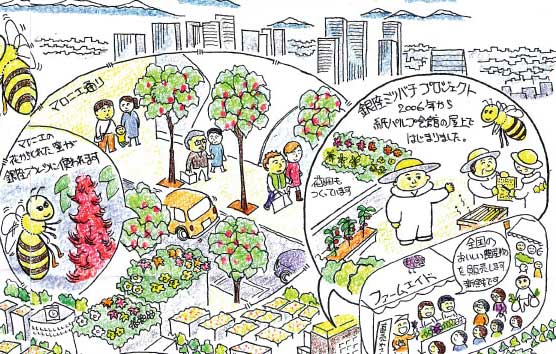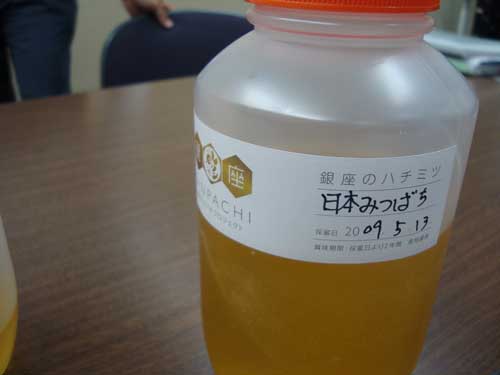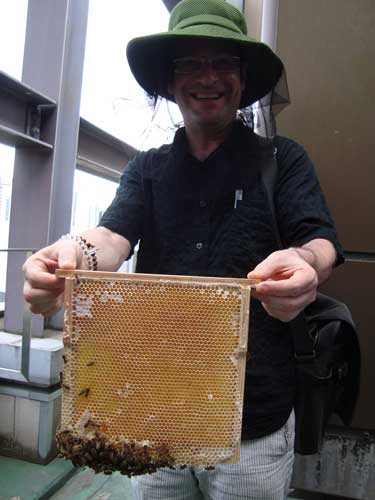
Last week the Ginza Honey Bee Project (銀座ミツバチプロジェクト) founders Takayasu Kazuo (高安和夫) and Tanaka Atsuo (田中淳夫) talked with me about their successful four year old honey-making project in the middle of Ginza, and showed me their rooftop hives.
We met in a unremarkable conference room in a nondescript office building behind Matsuya department store. A group of veterinarians was leaving, and we would soon be joined by a professional photographer. In the years since they launched urban bee farming in Tokyo’s most expensive commercial district, Ginza Honey Bee Project has attracted attention from local, national and international media, including National Geographic, BBC, CNN and many others.
Takayasu-san and Tanaka-san lead an all-volunteer effort, and their backgrounds are suitably in organic farming and real estate. They are deeply committed to keeping bees and reviving an industry that is in decline. Tanaka-san explained two factors contributing to the decline in the Japanese honey industry: deforestation after World War II to rebuild Japan and the increasing use of pesticides in rice farming. And while other countries are also experiencing “colony collapse disorder,” Japan is particularly vulnerable to the advanced age of its farmers and a decline in beekeepers from 15,000 to about 2,500.
Ginza Honey Bee Project aims to revive honey production, and increase awareness of the relationship between bees, nature and people. It was initially difficult to gain the permission of all 25 building tenants to have eight hives on the roof, housing 300,000 bees. Now they are producing 440 kilos of honey per year, one third of which goes to the volunteers and the remaining 3,000,000 yen in sales are donated to Ginza neighborhood projects such as an opera concert, a Farm Aid Ginza event in support of organic agriculture, local tree planting, and roof greening to create bee habitats. The large volunteer base includes Ginza club “mama-sans” and bartenders, landscape architects, art therapists and kids. Matsuya department store, a project sponsor, uses the Ginza honey in special pastries and a cocktail.

One interesting story Tanaka-san told was how Ginza Honey Bee Project rescued bees from nearby Tsukudajima that were going to be exterminated. There is now a hive of Japanese bees, which previously were not considered suitable for honey-making. Japanese bees are said to be at once “more gentle” and also “less loyal” to their hives. Despite some initial fears, we were encouraged to put our fingers in the honey-comb for a taste, and it was delicious.

The Ginza bees travel to the Imperial Palace and Hamarikyu, “flying faster than taxis.” The honey is labeled according to the nectar source, including chestnut, orange, clover and mint. The honey bottles are marked with the collection date. Future plans include a hoped-for 20 hive farm near Tokyo Station.